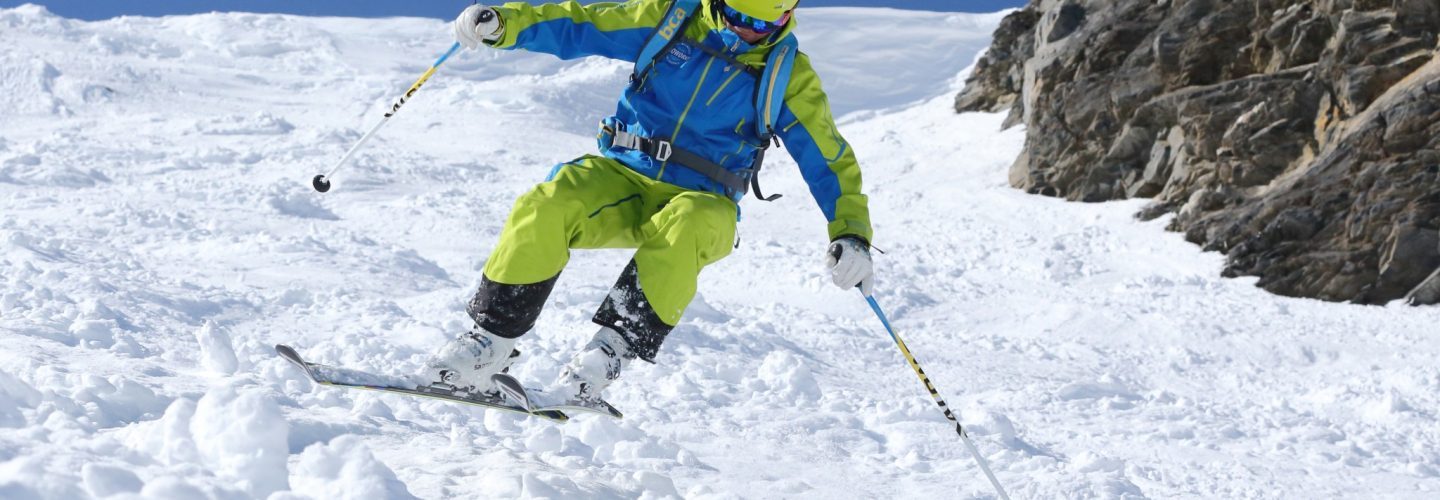SKI BETTER
Phil Smith from Snoworks Ski Courses talks about how you can improve your skiing, cope with more variation in the mountain environment and experience more than you ever thought possible at whatever level of skiing you have achieved so far. In his first article Phil talks about going OPEN.
GO OPEN
Many skiers at some point in their skiing hit what is commonly called a learning “plateau”. Plateaus can happen at any point in your skiing and can often be associated with the terrain becoming what we call more “open”. The intermediate plateau is the first of these, where the terrain moves from being well groomed to more varied. To make the transition through the intermediate plateau and beyond, the first step is to understand what we call “open” and “closed” sports and the difference in how they are learned and how they are performed.
WHAT ARE “OPEN” AND “CLOSED” SPORTS?
“Closed” sports are where the environment does not change : running in lanes, swimming in lanes, javelin throwing, figure skating, gymnastics and indoor high diving are all examples. “Open” sports are where the environment is constantly changing, such as football, rugby, tennis, sailing and surfing.
IS SKIING “OPEN” OR “CLOSED” ?
Skiing is probably one of the most “open” and dynamic sports there is, yet many skiers begin their journey with a “closed” methodology. This is because skiing begins in a “closed” environment, with nursery slopes and well-groomed blue and red pistes, but eventually goes “open” – bumps, steeper terrain, ice, powder, difficult blacks and off-piste.
Most intermediate skiers do indeed confine their skiing to where the terrain is more closed, such as well-groomed pistes. But is this because they want to or is it because they are limited to groomed pistes due to the way they have learned ?
ARE YOU A “CLOSED” OR “OPEN” SKIER?
Do you find yourself saying any (or all) of these ? Are you what we call a “variables victim”? In other words, do you need the environment “closed” ?
– I’m OK providing it doesn’t get icy.
– I can ski light powder, but when it begins to get heavy or varied, I struggle.
– I’m OK providing it doesn’t get steep.
– Other skiers put me off.
– I’m OK providing the bumps are nicely spread out.
– I struggle in bad visibility.
– I struggle in slush.
– I struggle on narrow paths.
– Trees put me off.
Each of the above statements has a variable attached to it : slope steepens, hazards appear, visibility changes, snow texture varies, other skiers get too close. If any of these statements ring true, then it’s time to go “open”, because if you have learned a “closed” method of skiing, you will always be a victim of skiing variables.
A simply analogy I constantly use for “open” skills would be trying to describe (and then teach) the movement patterns of running through a crowded bar carrying a tray of drinks ! To accurately describe what is happening and how to copy it is impossible. The probability of the same thing happening again exactly is like winning the lottery twice. The same movements would only work if you ran through the bar where each time everyone and everything always stayed in the same place. Of course this would never happen; more people may have arrived, the furniture may have moved and the floor may be more slippery.
HOW DO YOU GO “OPEN”?
The first step is to understand the “open” philosophy. Then simply learn “skills” that can be adjusted and varied to match the changing environment.
Learning to ski “open” may sound rather scientific and intense. At the very beginning, this may be true because you’ll no longer be told exactly what to do. You’ll learn skills that you can adjust according to your task and the environment so it may all sound a bit, could I say “open”, to begin with. However, learning “open” skiing comes with a warning: you’ll wish you’d discovered it years ago.
Phil Smith, Snoworks Ski Courses
Photo: Lee Townend, Snoworks instructor, skiing in the “open” environment.


![[Freeride] Going Open on your Skis](https://www.inthesnow.com/wp-content/uploads/2015/10/PortesDuSoleil.jpg)
![[Freeride] Going Open on your Skis](https://www.inthesnow.com/wp-content/uploads/2015/10/StMoritz_Hotel-ski-pass.jpg)